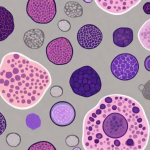This insightful article underscores the vital role of support groups in the journey of cancer recovery, offering comfort, understanding, and camaraderie to those affected by the disease. These groups create a safe space for patients to share emotions and experiences, fostering a sense of empowerment and community. The article explains how support groups function in a medical context, often led by healthcare professionals, providing emotional support and valuable information. Covering various types of groups, including those for specific cancers, young adults, children, caregivers, and spouses, it highlights the tailored support these groups offer. The psychological impact of cancer is also addressed, with emphasis on how mental health is integral to recovery. The benefits of support groups extend beyond emotional support; they also provide therapeutic sharing experiences and build essential social connections. While acknowledging that support groups may not suit everyone, the article suggests alternative support options, reinforcing the notion that everyone’s journey with cancer is unique. This comprehensive guide to support groups is an invaluable resource for anyone touched by cancer, illustrating the power of shared experiences and community in overcoming life’s toughest challenges.
Being diagnosed with cancer can be a life-altering experience, causing a whirlwind of emotions and challenges. However, the power of support groups cannot be understated in the journey towards recovery. Support groups provide an invaluable source of comfort, understanding, and guidance for cancer patients and their loved ones. In this article, we will explore the different aspects of support groups and their impact on cancer patients.
Understanding the Role of Support Groups
When facing a cancer diagnosis, it is common to experience a range of emotions, including fear, uncertainty, and sadness. Support groups offer a safe space for individuals to share their feelings and experiences with others who can relate. In these groups, patients find solace in the knowledge that they are not alone in their struggles.
Support groups provide a vital source of emotional support for cancer patients. They offer a platform for individuals to express their fears and concerns openly, without judgment. This sense of community can be immensely comforting, as it allows patients to connect with others who truly understand what they are going through.
Moreover, support groups foster a sense of empowerment among cancer patients. By sharing their experiences and listening to others, individuals gain valuable insights and coping strategies. They learn from each other’s successes and setbacks, finding inspiration and motivation to navigate their own cancer journey.
Defining Support Groups in a Medical Context
In a medical context, support groups are gatherings of individuals who share similar experiences, providing each other with advice, understanding, and emotional support. These groups consist of people who are going through cancer treatment, have completed treatment, or are supporting a loved one with cancer.
Support groups in a medical setting are often facilitated by healthcare professionals, such as psychologists, social workers, or oncology nurses. These professionals ensure that the group discussions remain focused, respectful, and supportive. They may also provide educational resources and guidance to help participants better understand their diagnosis, treatment options, and side effects.
By participating in a support group, individuals can gain a deeper understanding of their own emotions and reactions to cancer. They can explore different coping mechanisms, learn effective communication skills, and develop strategies for self-care. The guidance and expertise of healthcare professionals further enhance the support group experience, providing a comprehensive approach to emotional well-being.
The Different Types of Support Groups for Cancer Patients
Support groups for cancer patients come in various forms, catering to individual needs. Some groups focus on specific types of cancer, while others are open to all cancer patients. There are also support groups for young adults, children, caregivers, and spouses. Each group has its unique dynamics but shares the common goal of helping participants navigate their cancer journey.
Specific cancer-focused support groups allow individuals with the same type of cancer to connect and share experiences related to their specific diagnosis and treatment. These groups provide a space for members to discuss treatment options, side-effects, and recovery strategies that are specific to their cancer type. The shared knowledge and understanding within these groups can be invaluable in helping patients make informed decisions about their own care.
Support groups for young adults with cancer address the unique challenges faced by this age group, such as fertility preservation, career concerns, and maintaining social relationships. These groups offer a supportive environment where young adults can connect with peers who are going through similar experiences, fostering a sense of camaraderie and understanding.
Support groups for children with cancer focus on providing age-appropriate emotional support and education. These groups often incorporate play therapy and creative activities to help children express their feelings and cope with the challenges of cancer treatment. They also offer a space for parents to connect and share their experiences, providing mutual support and guidance.
Caregiver and spouse support groups recognize the important role played by family members and loved ones in the cancer journey. These groups offer a space for caregivers and spouses to share their own challenges, fears, and triumphs. They provide a network of support and understanding, helping caregivers and spouses navigate the emotional and practical aspects of supporting a loved one with cancer.
Overall, support groups play a crucial role in the lives of cancer patients and their loved ones. They provide a sense of belonging, emotional support, and practical guidance. By participating in these groups, individuals can find the strength and resilience to face the challenges of cancer, knowing that they are not alone.
The Psychological Impact of Cancer
Cancer not only affects the body but also takes a toll on mental health. The emotional challenges faced by cancer patients are significant and must be addressed for overall well-being.
Emotional Challenges Faced by Cancer Patients
From the moment of diagnosis, cancer patients may experience feelings of anxiety, depression, and isolation. Coping with the physical impact of cancer treatments, such as hair loss and fatigue, can further contribute to a sense of distress. Support groups provide a platform where patients can openly discuss and process these emotions in a non-judgmental environment.
The Role of Mental Health in Cancer Recovery
Studies have shown that mental health plays a crucial role in cancer recovery. Positive psychological well-being has been linked to better treatment outcomes and improved quality of life for patients. Support groups offer a space where individuals can learn coping strategies, gain perspective, and develop a positive mindset, all of which are vital in the fight against cancer.
How Support Groups Aid in Cancer Treatment
Beyond emotional support, support groups have tangible benefits that aid in cancer treatment and overall well-being.
Emotional Support and Its Benefits
The emotional support provided by support groups can alleviate feelings of loneliness and isolation, reduce stress, and increase feelings of self-worth. Studies have shown that patients who participate in support groups experience improved emotional well-being and cope better with treatment-related side effects.
Sharing Experiences: A Therapeutic Approach
Sharing experiences with others going through similar challenges can be immensely therapeutic. Support groups enable participants to exchange advice, share tips about managing side effects, and learn from personal stories of triumph. This shared knowledge empowers individuals to actively participate in their treatment and make informed decisions.
The Social Aspect of Support Groups
Support groups create a sense of community among cancer patients, fostering important connections and relationships that aid in the healing process.
Building Relationships through Shared Experiences
Connecting with others who have faced or are presently facing similar challenges allows for a unique bond. In support groups, patients find companionship and understanding. Friendships formed within these groups often last beyond the treatment period, providing ongoing support and encouragement.
The Role of Community in Healing
A strong support system can significantly impact a cancer patient’s healing journey. By participating in support groups, individuals gain access to a community that understands their struggles and can offer practical assistance, such as transportation to treatment sessions or help with daily tasks. This community instills a sense of hope, empowerment, and resilience.
The Limitations and Criticisms of Support Groups
While support groups have numerous benefits, it is important to acknowledge that they may not suit everyone’s needs and preferences.
Potential Drawbacks of Support Groups
Some individuals may find it challenging to openly share their personal experiences in a group setting, preferring one-on-one interactions. Additionally, conflicting personalities or group dynamics may hinder the effectiveness of support groups. It is essential for individuals seeking support to explore different options and find the approach that aligns best with their personal preferences.
Addressing the Criticisms: Are Support Groups for Everyone?
Support groups are not a one-size-fits-all solution. It is vital to recognize that what works for one person may not work for another. Alternative resources, such as online forums or individual counseling, can provide similar benefits for those who prefer a different approach. The key is to find the support system that fulfills the individual’s specific needs.
In conclusion, support groups hold immense value in the lives of cancer patients. By providing emotional support, fostering connections, and sharing experiences, these groups empower individuals to navigate their cancer journey with resilience. While not for everyone, support groups offer a unique opportunity for personal growth and healing. They remind us that, even in the face of the most challenging circumstances, we can find strength and solace in the company of others who truly understand.






